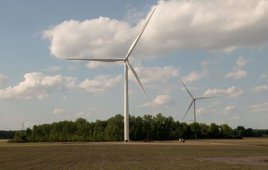
Paul Dvorak
A recently posted video praises coal for the abundant and inexpensive power it provides. The author (Mike Roberts who recently and unfortunately pulled the video) used Pittsburgh as an example of what coal power can do. Photos from a century ago showed the city with dark sooty pall over it during, presumably, a midday shot. The more recent photo showed a modern city with clean air made possible by coal. You can debate the vices and virtues of producing power from coal, but the video authors made a valid point: that abundant energy provides the jobs that developing countries need and cleans the environment.
For instance, says the narrator, if poor countries had reliable electricity, they could store food in refrigerators rather than in the open air exposed to disease carrying flies. With sufficient energy, students in poor countries could study after dark. With sufficient energy, companies in poor countries could automate some equipment and remove people from the hazard of dangerous work. With sufficient energy, hospitals in poor countries could power a wide variety of medical equipment that would improve diagnoses and treatments. With sufficient energy, life styles improve and people could get a foot on the first step in a climb out of poverty.
To be clear, we are talking about abject poverty, one associated with pictures of malnourished mothers waving flies off skinny children lying in fetal positions in dirt. Poverty in western nations is a considerable improvement.
Now we can debate the source the abundant energy. Funding construction of fossil fuel powered plants in poor countries might be justified if they have sufficient coal or oil reserves. Such resources are often available in plentiful supplies. But poor countries suffer from lack of other things. They are poor in leadership, poor in honest government, and wanting for just laws.

Photo by Roxy Crisp
You can also debate how best to serve poor countries. Economists report that over the last few decades, the U.S. and Europe have poured many billions into the third-world nations such as those in Africa and to little or no effect. So why pour more?
Recent developments in wind power, however, provide new possibilities. A wind turbine will cost something, but the fuel is free, clean, abundant, and almost everywhere. A 1-MW wind turbine would make a decent upgrade to an existing hospital as would a 100-kw version to a new clinic.
Honest and trustworthy government must precede any other consideration. But after that, sufficient energy opens many possibilities to improve the lives of thousands.
What do you think?
Filed Under: Uncategorized





Thanks for your comment, Ms. Walpert. Let me know of the progress you are making and I’ll report on that. Speaking of money, are you accepting donations?
Paul
I completely agree with your argument that wind is a much more viable energy option, partially because the “fuel” is free. Also because distributed generation is the way to go for developing countries. Among the things these countries lack is electricity distribution infrastructure. So put your money where your mouth is! TanzSolar could use some experienced wind professionals to assist us with wind installations in Tanzania. Let us know if you’re interested.